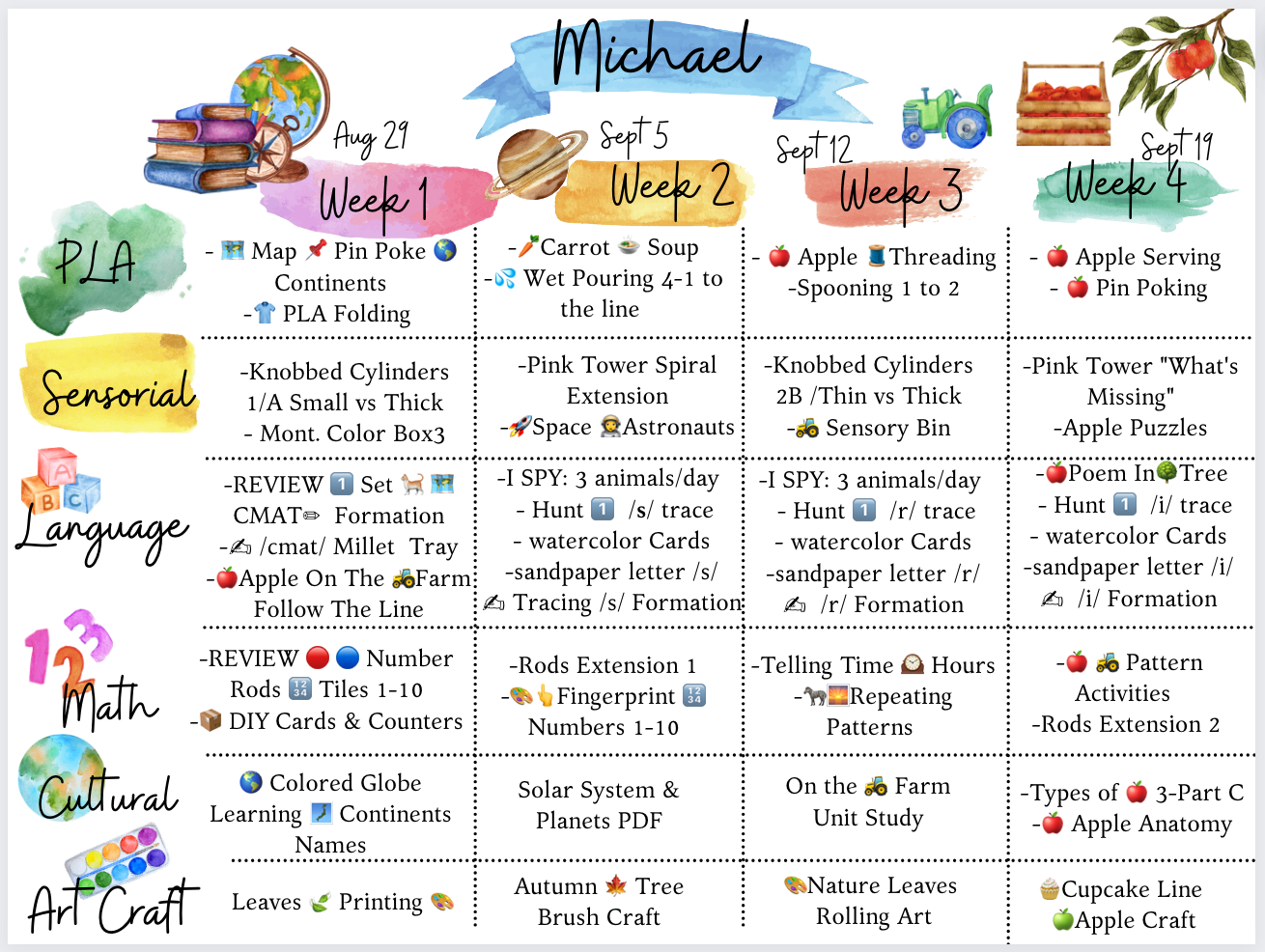Online Questionnaires
My Child as a Learner
This form will help determine your preferences and goals, as well as your child's interests, natural inclinations, and preferred learning style(s), such as visual, auditory, tactile, kinesthetic, etc.
Academic Questionnaire
Evaluation Zoom Call
(For the initial consultation, please disregard the Monthly Observation Form.)
Choose Your Welcome Learning Kit
I have a Gift for You!
Download my eBook "The Basics: Birth till Age 6" where I decipher all things Montessori!
The Basics eBook
For Your Reference
Kindergarten Readiness Guide
With the recent adoption of the Common Core State Standards, please feel free to familiarize yourself with these academic standards for the Kindergarten level.
Common Core Standards
5 Core Montessori Subjects
Practical Life Activities
(a) care of self such as food prep, dressing, washing,
Sensorial Works
Sensorial Activities focus on and allow the child to refine each of the senses. They include specifically designed materials that isolate just one quality. As such, sensorial activities refine fine motor skills, visual and auditory senses, and develop coordination and the ability to order and classify. In particular, sensorial activities focus on either sight (visual), touch (tactile), smell (olfactory), taste (gustatory), sound (auditory), and stereognostic (kinesthetic) senses.
Language Works
Language curriculum is based on phonemic awareness and children learn to read by following a phonetic approach. Children also work through specific hands-on tactile language materials such as sandpaper letters and the moveable alphabet. Steps towards literacy plan promotes early literacy while following a non-traditional approach to language development.
Mathematics
Many sensorial materials, such as a Pink Tower, Red Rods and sensory Tactile Boards are in fact a precursor to numeracy work. A child then transitions to number rods, sandpaper numbers, number boards, spindle box, number tiles, beads, and games. Each exercise builds upon another and the child gradually moves from concrete to abstract areas such as place value, addition, subtraction, multiplication, and fractions.
Cultural & Science
Some of the areas of study are:
(a) Geography (solar system, continents, landforms, earth layers)
(b) Zoology (classification, physiology of animals)
(c) Botany (ecology, classification, physiology of plants)
(d) History (clock, timelines, using a calendar)
(e) STEM & Science Experiments
Arts & Crafts
In a Montessori environment, although not a "core subject," arts and crafts provide children with a hands-on way to express creativity and develop fine motor skills, fostering a sense of independence and self-expression. Through self-guided exploration of various materials, children cultivate their imagination and build confidence, nurturing their cognitive and emotional growth.
Sample Curriculum Plan



